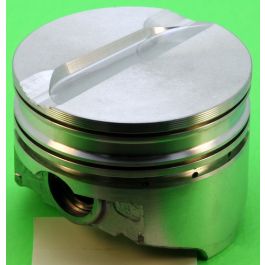One thing I learned from my late machine shop operative was that burnt valves started with worn valve guides/valve stems. Letting the valve "bounce" or not seat correctly each time it seated. No wobbles allowed. Remember, too, that as the pushrod pushes down on the valve end, it also puts a side load onto the valve stem and valve guide. A roller-tip rocker arm removes the bulk of that.
In the 1980s, getting hard seats installed (was about $200.00/V-8 set locally), was seen as an investment in longevity. Some shops did not do a good job of them, so some failures happened. When done correctly, they were not pretty, either.
In about 1974, I found a copy of Chilton's "Automotive Industries" magazine. In that issue, Chrysler did a durability test on a '73 T&C wagon, full HD trailer tow package vehicle, 440, towing a max rated capacity travel trailer on the proving grounds. Target speed was something like 70mph? Oil changes/maintenance preformed on a schedule. The engine performance was also noted, as the onset of valve seat failures were documented. The engine might have been partially disassembled for wear checks, too. The cyl heads were production without induction hardened seats, when they recommended one tank in three tanks have some lead in it.
By the time that 12K miles had been completed, most of the exh valve seats were failed and the heads were ready for the salvage pile. Valve seat erosion was the main issue. I suspect that some of the seats eroded a good while before the test ended, though. The test was run on unleaded fuel.
After seeing that article, the addition of hard seats was validated to me. Several years later, I learned form my late machine shop operative that a normal valve job would grind-through the induction hardening layers. Yes, some would remain, but the bulk of them would be gone. I then wondered just how far the resulting layers might help? My suspicion is that the vehicles the cyl heads went on probably went on to new owners a few years later. By that time, any valve seat failures would have been considered "normal for the age of things" and not of a big concern.
To me, getting hard seats installed or buying aluminum cyl heads with hard seats already in them, can be like putting a roller timing chain to replace a normal timing chain (and plastic cam sprocket) . . . insurance in future engine longevity. Something not having to be worried about again, in the long future of my ownership of the vehicle. Necessary to go that extra effort? No. Piece of mind? Yes. I would also make any future owners aware of my upgrades, too.
Everybody has their own sensitivities to these things, which I respect.
Enjoy!
CBODY67


















